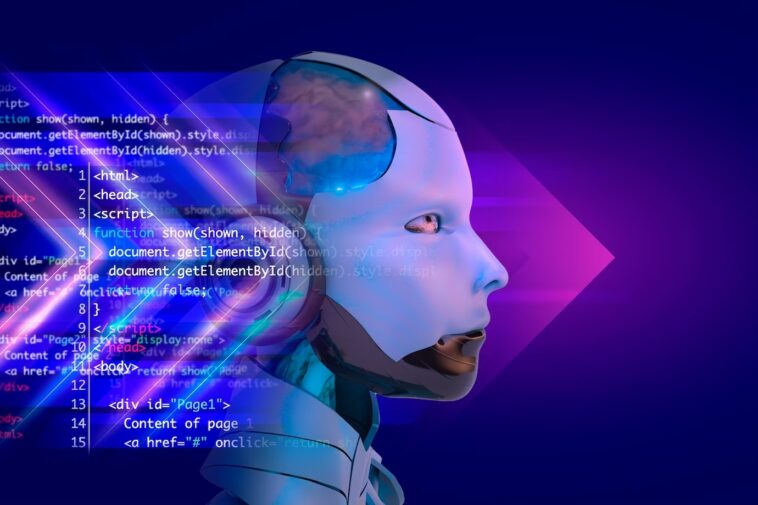Machine learning algorithms are a key component of the field of machine learning, which is a subfield of artificial intelligence. These algorithms are used to train machines to learn from data, enabling them to make predictions, classify data, and identify patterns. In this blog, we’ll explore what machine learning algorithms are, how they work, and the different types of algorithms used in machine learning.
What Are Machine Learning Algorithms?
Machine learning algorithms are mathematical models that enable computers to learn from data. These algorithms are designed to identify patterns in the data, and use these patterns to make predictions or classify new data.
Machine learning algorithms are typically divided into two categories: supervised and unsupervised learning. In supervised learning, the machine is trained on a set of labeled data, where the correct output is provided for each input. In unsupervised learning, the machine is trained on a set of unlabeled data, where the goal is to identify patterns or structure in the data.
How Do Machine Learning Algorithms Work?
Machine learning algorithms work by identifying patterns in the data. These patterns can be used to make predictions or classify new data.
The process of using machine learning algorithms typically involves the following steps:
Data Collection:
The first step in using machine learning algorithms is to collect data. This data can come from a variety of sources, including sensors, databases, or manual entry.
Data Cleaning:
Once the data has been collected, it needs to be cleaned and preprocessed. This involves removing any outliers or errors in the data, and transforming the data into a format that can be used by the machine learning algorithm.
Feature Selection:
In machine learning, features are the inputs that the algorithm uses to make predictions or classifications. Feature selection involves choosing the most relevant features for the problem at hand.
Training:
After the data has been cleaned and preprocessed, and the features have been selected, the machine learning algorithm is trained on the data. During training, the algorithm adjusts its internal parameters to minimize the difference between its predicted outputs and the correct outputs.
Evaluation:
Once the algorithm has been trained, it is evaluated on a separate set of data. This evaluation helps to determine how well the algorithm is performing, and whether any further adjustments need to be made.
Types of Machine Learning Algorithms
There are many different types of machine learning algorithms, each designed for specific tasks and applications. Here are some of the most commonly used algorithms:
Linear Regression:
Linear regression is a supervised learning algorithm that is used to predict a continuous output variable based on one or more input variables.
Logistic Regression:
Logistic regression is a supervised learning algorithm that is used to classify data into one of two categories.
Decision Trees:
Decision trees are a supervised learning algorithm that is used to make decisions based on a set of conditions.
Random Forests:
Random forests are an ensemble learning algorithm that combines multiple decision trees to improve accuracy and reduce overfitting.
Support Vector Machines (SVMs):
SVMs, also known as Support Vector Machines, are a type of supervised machine learning algorithm utilized for the purpose of categorization and prediction analysis.
K-Nearest Neighbors (KNN):
KNN is a supervised learning algorithm that is used for classification and regression analysis. It works by finding the k nearest neighbors to a new data point, and classifying the data based on the most common class of those neighbors.
Naive Bayes:
Naive Bayes is a supervised learning algorithm that is used for classification. It is based on Bayes’ theorem, which states that the probability of a hypothesis is equal to the prior probability of the hypothesis multiplied by the likelihood of the data given the hypothesis.
Clustering: Clustering is an unsupervised learning algorithm that is used to group data points into clusters based on their similarities.
Conclusion
In conclusion, machine learning algorithms are essential tools for enabling machines to learn from data and make predictions, classify data, and identify patterns. These algorithms come in various types and are suitable for different applications, including linear regression, logistic regression, decision trees, random forests, support vector machines, K-nearest neighbors, naive Bayes, and clustering.
The application of machine learning algorithms has become increasingly prevalent in various industries, including healthcare, finance, and transportation, among others. The development of these algorithms has enabled companies to optimize their operations, increase efficiency, and reduce costs.
However, it’s worth noting that while machine learning algorithms have proven to be highly effective, they are not foolproof. The accuracy of these algorithms is highly dependent on the quality of the data that they are trained on. Therefore, it’s essential to ensure that the data is clean and relevant for the problem at hand.
Moreover, the application of machine learning algorithms raises concerns regarding data privacy and security. As machines increasingly become responsible for making decisions, it’s crucial to ensure that these decisions are transparent and unbiased.
In conclusion, the development of machine learning algorithms has transformed the field of artificial intelligence, enabling machines to learn from data and make predictions, classify data, and identify patterns. However, as with any technology, it’s essential to remain cautious and ensure that these algorithms are developed and applied ethically and responsibly.




Comments
0 comments